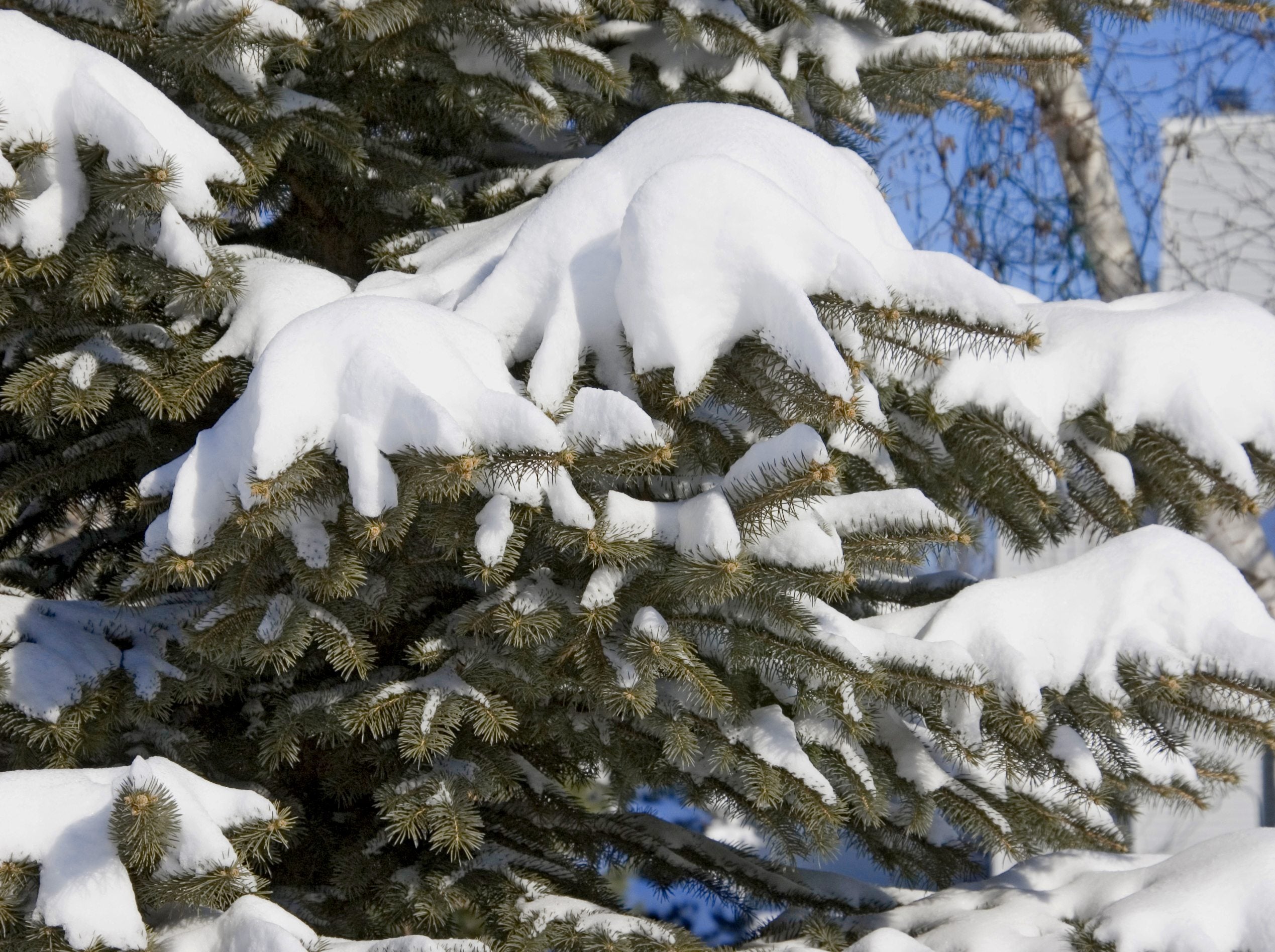Shrubs Damaged By Snow: Fixing Winter Damage To Evergreens


Most evergreen conifers that have evolved with cold winter climates are designed to withstand winter snow and ice. First, they typically have a conical shape that easily sheds the snow. Second, they have the strength to bend under the weight of snow and with the force of wind. However, after heavy storms, you may see a significant buildup of snow bending over evergreen branches. It can be quite dramatic, with branches nearly touching the ground or bent back half way. This may alarm you. Has the snow and ice caused winter damage to evergreens? Read on to learn more about evergreen snow damage.
Repairing Snow Damage to Evergreen Shrubs and Trees
Every year trees and shrubs damaged by snow break off or become misshapen. This is typically due to extreme weather events combined with plants that have a weak spot. If you are concerned about evergreen snow damage, proceed carefully. Brush off the snow gently if you feel it necessary. While you may be tempted to intervene, you just might want to wait and assess the situation further before doing so. It is important to remember that the branches of trees in cold winter weather can be brittle and easily damaged by people whacking at them with brooms or rakes. After the snow melts and the weather warms up, the tree sap will start flowing again. It is at this point that the branches typically bounce back to their original position. Winter damage to evergreens is more common with trees or shrubs that have tips that point upward. An arborvitae is a good example of this. If you see snow bending over evergreens such as arborvitae, remove the snow carefully and wait to see if they bounce back in the spring. You can also prevent this from occurring in the first place by tying the branches together so snow can’t get in between them. Start at the tip of the evergreen plant and work your way around and downward. Use a soft material that won’t damage the bark or foliage. Pantyhose works well but you might have to tie many pairs together. You can also use soft rope. Don’t forget to remove the wrapping in spring. If you forget, you could choke the plant. If the branches don’t bounce back in spring, you actually have evergreen snow damage. You can tie the branches to other branches in the tree or shrub for borrowed strength. Use a soft material (soft rope, pantyhose) and attach the branch below and above the bent over section and tie it to another set of branches. Check the situation again in six months. If the branch doesn’t repair itself, then you may have to remove it.
Sign up for the Gardening Know How newsletter today and receive a free copy of our e-book "How to Grow Delicious Tomatoes".

Karen Boness is the founder of Wild Willow Design, an Australia-based company that specializes in ecological landscape design.